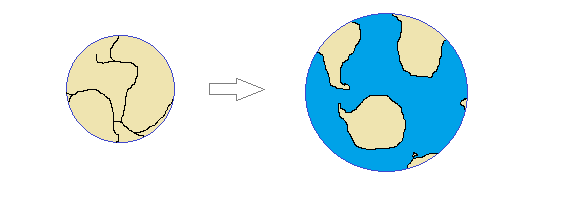Back in 2018, I noted that Earth's equator during the last ice age was unlikely to have been where it is today due to the weight of the ice mass centred above Hudson Bay. I further suggested that this could be used as a dating mechanism for ancient monuments.
As it happens, a Dutch researcher has done exactly what I suggested, and his findings are both conclusive and informative. By comparing the orientation of more than a thousand ancient monuments, he's been able to demonstrate that the equator has shifted no less than five times during human existence.
The shifts haven't been due to the location of the ice caps, but rather the expansion of the Pacific ocean. With the Pacific expanding more than the Atlantic, Earth has had an uneven redistribution of its mass. This has in turn forced the north pole to shift from south of Greenland to north of Greenland during human existence. The orientation of ancient monuments suggest that this has happened in jumps that lasted about ten thousand years each.
When this data is correlated with ice core samples taken from Antarctica, we see that the jumps correspond to ice ages, and that humans have been around for several hundred thousand years. We didn't first start building monuments a few thousand years ago. Our history of monument building dates back far longer than that.
On a related note, we have this article from Yahoo asserting that Earth has tilted more than 31 inches on its axis since 1993. The article claims that human activity is to blame, but a continued expansion of the Pacific seems a more reasonable explanation. It appears then that the next destination of Earth's north pole is somewhere close to Alaska.
 |
| Earth's expansion seen from the South pole |
No comments:
Post a Comment